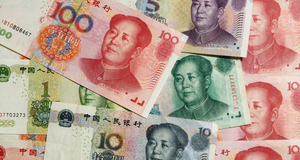Featured Article:The Beijing Consensus: China's Alternative Development Model
By
2010, Vol. 2 No. 01 | pg. 2/2 | « Discussion: Taking the Beijing Consensus Beyond ChinaOne of the primary hallmarks of the Beijing Consensus is that it does not dictate finite policy points to those who may seek to use it as a model. Where the Washington Consensus clearly delineates ten relatively unambiguous recommendations, the BJC is formed, merely, around three ideas, which are in themselves less tangible and more subjective then those of the WAC. This leads to an important question: is the Beijing Consensus really useful as a development model? Arif Dirlik, a China specialist, questions the true utility of the BJC on the basis of its broad nature and lack of specificity: Dirlik instead calls the Beijing Consensus “a notion, rather than a concept or an idea, because it does not have any of the coherence that we associate with either of those terms” (Dirlik, 2006: 1). Dirlik also brings up some of the downsides to China’s boom, addressing the fact that a large portion of the population has been “marginalized by… new development policies” (p. 4), and brining attention to the environmental challenge China now faces, describes pollution levels as so severe that they are “an additional cause of public suffering and disturbance” (p. 7). The implementation of China’s development ideals has obviously not been without flaw. However, although Dirlik offers a challenge to viewing the BJC as a “model,” or even as a true “consensus,” he recognizes that the BJC is important for other reasons:“In the PRC, the search for autonomy and self-determination has taken… a multilateralist approach to global relationships which contrasts sharply with the increasingly unilateralist direction US policy has taken over the last two decades. The most important aspect of the Beijing Consensus may be an approach to global relationships that seeks, in multinational relationships, a new global order founded on economic relationships, but which also recognizes political and cultural difference as well as differences in regional and national practices within a common global framework…. A century of revolutionary socialist search for autonomy, bolstered by recent economic success, qualifies the PRC eminently to provide leadership in the formation of an alternative global order.” (Dirlik, 2006: 5) The suggestion Dirlik is making it that despite its imperfections, the BJC is relevant to the world—not necessarily as a directly replicable model—but as a new lens through which to view the world (an “alternative global order”). Other scholars echo Dirlik, suggesting that while the ideas from which the BJC is composed have a legitimate value, calling the Beijing Consensus a “consensus” may be overly flamboyant; instead, analysts tend to refer to these ideas more preferably as a “China model” (Lai-Ha, Lee, & Chan, 2008: 12). Lai-Ha, et. al. write, “It is worth noting that Chinese analysts only disagree with [the BJC] over a different use of terminology to sum up China’s experience. By and large, they resonate with [the BJC] by putting emphasis on the claims that the state should play a predominant role in reform and development. They also point out that there should not be any universal blueprint for development imposed by external actors from above” (Lai-Ha, Lee, & Chan, 2008: 13). Therefore, in exploring the feasibility of implementing the BJC as a development model outside of China, the result is twofold. On one hand, the BJC is limited by China’s own unique experience: the long experiment with socialism, the world’s largest population, a noteworthy Confucian tradition, and a unified national identity all make China distinctly Chinese. On the other hand, the BJC serves as a convenient starting point for identifying a mode of development that is independent from the currently accepted model (i.e., the Washington Consensus). In this sense, the BJC is highly valuable to the developing world by “[serving] to enhance the voice of developing nations in global affairs” (Lai-Ha, Lee, & Chan, 2008: 13). Ultimately, the BJC does not dictate any specific policy that adherents must undertake, and it is thus less outwardly recognizable as a “model”—but, the ideas from which the BJC is composed create a base upon which policy can be shaped. Furthermore, disdain with failed Western policies significantly increases the appeal of the BJC in the developing world. ConclusionThe Beijing Consensus is not actually a “consensus” in the same way that the Washington Consensus has come to be understood, as an ideal form of development. Instead, it is a new way of thinking about the global order that is intended to be contrarian, and which realizes value—most basically—as an alternative to the currently dominant ideology. Because of its position as an “alternative,” the Beijing Consensus is naturally appealing to states that have not benefited from the existing international power structure. In many ways, the Beijing Consensus is presently manifested as a growth of Chinese “soft-power” throughout the globe, particularly in regions such as Africa and the Middle East (Lai-Ha, Lee, & Chan: 13). China’s use of soft-power furthermore stands in stark contrast to the continuous reliance on hard-power solutions by the United States and other Western nations. It appears likely that the Beijing Consensus will continue to play a growing and increasingly important role in shaping future development initiatives throughout the world. The role of the Beijing Consensus is realized both as an alternative development philosophy, and as a gauge to the changing international environment. Ultimately, the rise of this idea is indicative of China’s increasing importance as a world power. References--. 2008. “235 million people lifted from absolute poverty.” People’s Daily (English). Retrieved from: --. 2009. “China pledges $10bn Africa loans.” BBC. Retrieved from: --. 2009. “Human development report 2009: China”. UN Development Program (UNDP). Retrieved from: Dirlik, Arif. 2006. “Beijing Consensus: Beijing ‘Gongshi.’” Globalization and Autonomy Online Compendium. Retrieved from: Gresh, Alain. 2008. “Understanding the Beijing Consensus.” Le Monde Diplomatique. Retrieved from: Handelman, Howard. 2008. The challenge of Third World development (5th edition). Upper Saddle River: Prentice Hall. Harris, Helen. 2008. "The Washington Consensus reconsidered: towards a new global governance." (Book Review). Journal of International Affairs 62.1. Academic OneFile, (accessed November 9, 2009). Lai-Ha, Chan, Pak K. Lee, and Gerald Chan. 2008. "Rethinking global governance: a China model in the making?" Contemporary Politics 14, no. 1: 3-19. Academic Search Premier, EBSCOhost (accessed November 18, 2009). Leonard, Andrew. 2006. “No consensus on the Beijing Consensus.” Salon. Retrieved from: Lyman, Princeton N. 2005. “China’s rising role in Africa.” The Council on Foreign Relations. Ogden, Suzanne. 2002. Inklings of democracy in China. New York: Harvard University Asia Center Oniz, Ziya. 2004. “Argentina, the IMF, and the limits of neo-liberal globalization: a comparative perspective.” Review of International Affairs. Ramo, Joshua Cooper. 2004. “The Beijing Consensus.” The Foreign Policy Centre. Serra, Narcis and Joseph E. Stiglitz. 2008. The Washington Consensus reconsidered: towards a new global governance. Oxford: Oxford University Press. Wade, Robert. 2003. Governing the market: economic theory and the role of government in East Asian industrialization. New York: Princeton University Press. Williamson, John. 2002. “What Washington means by policy reform.” Peterson Institute for International Economics. Retrieved from: Williamson, John. 2004. “A short history of the Washington consensus.” Proceedings from 2004: From the Washington Consensus towards a new Global Governance. Barcelona. Yusuf, Shahid and Kaoru Nabeshima. 2006. China’s Development Priorities. The World Bank. Suggested Reading from Inquiries Journal
Inquiries Journal provides undergraduate and graduate students around the world a platform for the wide dissemination of academic work over a range of core disciplines. Representing the work of students from hundreds of institutions around the globe, Inquiries Journal's large database of academic articles is completely free. Learn more | Blog | Submit Latest in International Affairs |


















